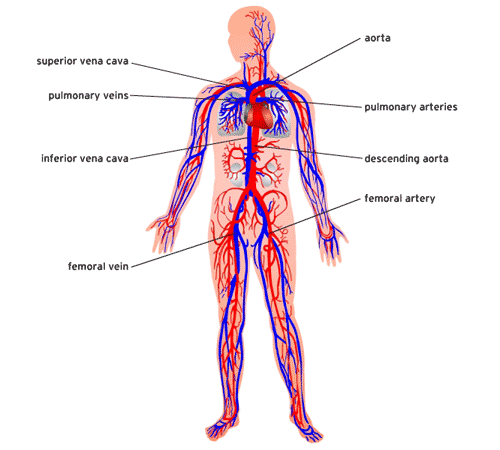The students do not need to know all of the names of the various arteries and veins; it is more important that they understand the main ideas:
- What are cells? (Small units found in all living organisms)
- What do cells need to survive? (Water, food, gas exchange, waste disposal)
- How do many animals, including mammals, get these requirements to the cells? (Through a circulatory system).
- What are the key components of human circulatory system? (Blood, heart, arteries, veins and capillaries)
- How does the body respond to increased cell needs during exercise? (By increasing breathing and heart rate, the circulatory and respiratory systems can get more oxygen to cells).
- Why do your veins appear blue? (They contain blood that has already "given up" it's oxygen to the cells, so the blood itself is blue. When you cut yourself, the blood immediately gets oxygen from the air, so blood from all cuts is red.)
- How many chambers does the human heart have? (4. The right two chambers are responsible for pumping deoxygenated blood to the lungs, while the left two chambers are responsible for receiving oxygenated blood from the lungs and pumping it to the body.

No comments:
Post a Comment